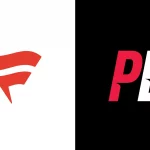Understanding Sports Betting Bankroll Management and ROI


Sports betting bankroll management is a topic that most casual bettors shy away from. However, if you’re tired of losing and want to turn your crypto betting fortunes around, it is time to think like an investor.
This process means you must embrace gambling bankroll management and set your profit expectations. Otherwise, you’ll continue handing money to the bookmakers with no realistic hope of getting it back.
This article outlines everything you need to know about setting a bankroll that helps you get through the tough times and thrive when the going is good. It also sets things straight about how much you can realistically win.
Bankroll Management in Sports Betting: How Much to Invest?
Before you begin, you must prepare to lose your entire bankroll. Most people aren’t; as a result, they lose faith in whatever betting system or portfolio they have invested in. Estimates vary, but it seems as if most bettors quit once they lose 55% of their bankroll.
You must shed that mindset and understand that what you stake is what you could lose. Simply put, don’t set your bankroll at $5,000 if you’re only prepared to lose $2,500!
Bankroll size is an individual decision. The mantra “Only bet what you can comfortably afford to lose” carries significant weight here. You heap unnecessary pressure on your shoulders by risking too much, likely impacting your decision-making negatively.
Determining the size of your bankroll involves developing a staking plan, which means analyzing the likely win rate of your system or portfolio in the long term.
How to Discover Your Likely Win/Loss Rate
Unfortunately, knowing your betting system’s actual win rate is impossible unless you have a crystal ball. However, believe it or not, you can get a decent ballpark estimate by knowing the average odds you’re likely to bet at.
For example, most professional bettors who back the famous “money line” bet know that the available odds are usually 1.91. There are factors such as bookmaker edge and whether you’re skillful enough to overcome it. However, when creating your win rate rough estimate, it is okay to ignore these factors.
At odds of 1.91, there is a 52.38% chance of winning the wager (the implied probability). If you plan to mostly back money line bets, you can assume a 52%-win rate or thereabouts.
Things get trickier if you have a portfolio featuring high, medium, and low odds wagers. Yet, if you’re betting according to systems, you can use their historical performance as your estimate.
Sports Betting Bankroll Management: How Much to Risk?
Your total investment depends on the level of risk you’re willing to take. Also, you must divide your bankroll into units to ensure you stake an appropriate amount on each wager. It makes little sense to bet $50 on one bet at odds of 2.00 and $8 on another bet at the same odds!
According to one rule of thumb, your bankroll should contain enough units to manage ten times your likely longest losing streak. If you’re a risk taker and want a larger unit size, you could nudge it towards five times the worst losing streak you’ll suffer.
However, doing this dramatically increases your risk of ruin. Risk-averse investors should lean towards 15 times the most extended losing streak.
Leave Some Room for Manoeuvre
At a win rate of 50%, you can expect a losing streak of 10 bets in any 1,000-bet sample. Bear in mind that you could endure a much longer string of losses. Therefore, you should include a little wiggle room.
Using the medium-risk plan of 10 times your longest losing streak, you will divide your bankroll into 100 units if you expect to win 50% of your bets. If you’re willing to risk $2,000, a single unit is worth $20. However, this depends on the staking plan you choose, and there are three main ones to consider.
1. Flat Staking
Flat staking is the most straightforward and arguably the best choice for novice bettors. You bet a specific percentage for each wager by dividing your bankroll into units.
For instance, with a 100-unit bankroll, you risk 1% on every wager. Some bettors may increase this for specific bets where they feel there is a higher edge in what is known as a “confidence” betting system.
Although flat staking is perfectly fine and can help ease risk (depending on other factors), it can also prevent you from maximizing your profit.
Therefore, you should consider adding the magic of compounding to a flat staking plan. This means increasing your stakes when your bankroll reaches a new high point or at certain periods.
Compounding
Suppose your bankroll is $5,000, and you engage in flat staking at $50, or 1% of your bankroll. After a month, you have earned a $200 profit, and your bankroll stands at $5,200.
With compounding, you risk 1% of your new balance, which means $52 per unit instead of $50. It is a staking plan that makes the most of winning streaks.
However, since it can prove damaging during bad spells, it is best to avoid compounding too regularly. Rather than increasing the unit size every time the bankroll goes up, only do it after a profitable month. Also, don’t reduce your unit size below its original level if your systems are not firing.
Using the above example, you continue betting $50 even if your bankroll falls to $4,000.
Compounding is an excellent option if you use a system with a high strike rate. By doing this, you enjoy pretty steady long-term progress with manageable downturns.
However, it is NOT the best option for low strike rate systems, as you could lose an uncomfortably large percentage of your bankroll during a losing spell.
If you insist on using compounding, add more units to your bankroll, perhaps 150 instead of 100, for instance. Doing so gives you a more significant safety net.
2. Proportional Staking
With proportional staking (also known as percentage staking), you wager according to the potential return. For instance, if you want to earn a $10 profit per bet, you would wager:
- $20 if the odds are 1.50
- $10 if the odds are 2.00
- $5 if the odds are 3.00
- $2.50 if the odds are 5.00
This staking plan is a great addition to sports betting bankroll management. What’s strange is that relatively few people use it. Proportional staking is ideal if you have a betting portfolio and wager at very different odds.
Does it make sense to bet $20 at odds of 10.00 and $20 at odds of 1.66? The implied probability of the first wager winning is just 5% compared to 60% for the second wager. Yes, it hurts if you win at odds of 25.00 and only stake 0.1 unit, but such wagers rarely win.
3. Kelly’s Criterion
John Larry Kelly Jr., a scientist, created the Kelly criterionformula in 1956. Developed initially to determine how to maximize the long-term ROI of investments, some gamblers use this mathematical formula to calculate the optimal stake size for each bet.
You can simplify the Kelly criterion by saying:
Stake Size = ((Decimal odds x probability of winning) – 1 / (Decimal Odds – 1) x 100
- Stake Size: The Kelly percentage; this marks how much of your bankroll to bet
- Decimal Odds: The price offered by the bookmaker
- Probability of Winning: The likelihood of winning according to the bettor
There are two significant problems with the Kelly criterion for sports betting bankroll management. First, you need to know your edge over the bookmaker. This is extremely difficult to calculate; if you get it wrong, you will wager far too much of your bankroll. Second, the stake size is usually quite large, which means it is an inherently risky strategy.
Suppose the odds of the Tennessee Titans beating the Pittsburgh Steelers in the NFL are 2.40, an implied probability of 41.67%. However, according to your statistical model, the Titans have a 48% chance of winning.
An Example of Kelly’s Criterion in Action
Here is how much of your bankroll to stake according to the Kelly criterion:
Stake Size = ((2.4 x 0.48) – 1 / (2.4 – 1) x 100
Size of stake = ((1.152 – 1) / 1.4) x 100
Stake Size = 0.10857 x 100 = 10.86%
Therefore, you would risk almost 11% of your entire bankroll on a single bet in this example! With a $5,000 bankroll, you would bet almost $543 on this wager.
Risk-averse bettors use variations such as half Kelly or even quarter Kelly. If you went with quarter Kelly in the above example, your stake size would fall to a more reasonable 2.72%, or $136.
If the above seems like too much math, plenty of Kelly criterion calculators help you find the answer quickly! No matter your staking plan, think worst-case scenario. Doing so will prevent you from losing too much, too quickly.
What Is a Good ROI for Sports Betting?
Return on Investment (ROI) is an economic term outlining how much you win or lose in any investment. It is expressed in percentage form or raw numbers. For instance, if you invest $500,000 in a property and sell it for $600,000 after taxes and sales fees, you earn a profit of $100,000 or an ROI of 20%.
Regarding sports betting ROI, almost every bettor has unrealistic expectations. There are tipsters with a 20% ROI (with high variance and long-losing streaks), but generally, 5% is outstanding. The challenge is ensuring you bet enough to make it worthwhile.
Also, too many bettors fall into the trap of believing ROI is the only thing that matters in sports betting. In reality, you should focus on Return on Capital (ROC) instead.
Sports betting is much different from other forms of investment. Your ability to turn over your bankroll multiple times means you can get more out of $1,000 than a stock market investor gets from $10,000.
Let’s say you have a $3,000 bankroll and make five bets a day worth one unit each on average with a 100-unit bankroll. One unit is $30, so you stake $150 per day or $4,500 per 30-day month. At a 5% ROI, you earn a profit of $225. In ROC terms, however, the figure is much higher. $225 is 7.5% of $3,000 and is your ROC percentage.
If you were to earn $225 on average for all 12 months of the year, your total profit would be $2,700 for a ROC of 90%. Yes, you could almost double your bankroll in a year!
High Volume Reduces the Need for a High ROI
You can profit significantly from an ROI of just 3% if you’re willing to do the work. Using the hypothetical $3,000 bankroll, you reduce risk by using 200 units at $15 apiece. It is a necessary decision because you’re making 30 bets a day.
In a 30-day month, you stake a total of $13,500 (30 x 30 x 15). At an ROI of 3%, your total profit is $405 (0.03 x 13,500), for a ROC figure of about 13.5%.
If you make $405 monthly, your total annual profit is $4,860, with an incredible ROC of 162%. Try getting that on the stock market!
No matter how you approach things, ensure you take out some profits regularly. A worthy goal is to withdraw the equivalent of your initial bankroll to ensure no additional risk.
If you earn $4,860 in year one, you can ‘withdraw’ your initial $3,000 and continue with the profit as your new bankroll, for instance.
To sum up, a good ROI for sports betting is 5%, and anything above that is fantastic. Even a 2-3% ROI can prove lucrative long-term if your betting volume is high enough.
However, ROC is a more relevant metric for sports bettors. Remember that many traditional investment vehicles seldom provide a greater ROC than 10% yearly. Even a low ROI, conservative sports betting system can comfortably beat that figure.
Poor Sports Betting Bankroll Management = High Risk of Ruin
Unless you strike it lucky with one big payday, you’ll never succeed in crypto betting without proper bankroll management. It helps shield you from losing streaks and potentially helps you get the most out of winning runs.
Before you begin, set realistic profit ambitions based on your likely investment level. With patience and compounding, you’ll be stunned by how your bankroll will grow over time. Crypto betting as an investment means forgetting about short-term downswings and focusing on the bigger picture.
One final point; make sure you track your results. How else can you tell whether your betting strategy is working?
By tracking the data, you learn more about winning and losing streaks, the types of bets that work, and much more. If you use several betting strategies in a portfolio, tracking the results lets you see if one or more systems are letting you down.











